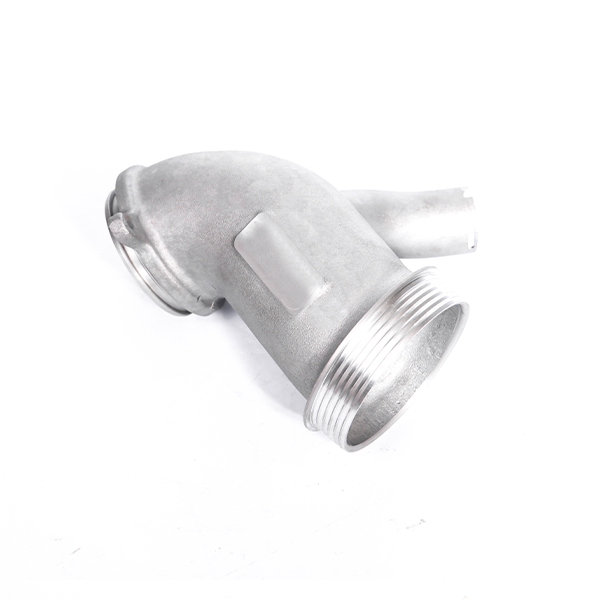Mobile:+86-311-808-126-83
Email:info@ydcastings.com
English
Auto Electric Water Pump – High-Efficiency, Quiet, Long-Life
Field Notes on the Modern Auto Electric Water Pump
I spend a lot of time in factories and dyno cells, and—honestly—the quiet hero in today’s thermal systems is the Auto Electric Water Pump. It’s not flashy, but it keeps batteries, turbos, inverters, and cabins at the right temp while sipping watts. The big shift? Smarter PWM control, higher ingress protection, and housings that survive brutal underhood heat soak. Surprisingly, even traditional casting houses are now shipping Tier-1-ready pump housings.

Where the market is heading
Three trends keep popping up in RFQs: 1) brushless motors with sealed electronics (IP67/69K), 2) PWM or LIN control to modulate flow and reduce parasitic loss, and 3) lightweight, cast-aluminum housings for durability at elevated coolant temps (up to ≈110–120°C). Many customers say the latest Auto Electric Water Pump variants cut average energy use by 10–25% versus old belt-driven units, especially in hybrids where after-run cooling matters.
Typical specifications (real-world use may vary)
| Parameter | Spec (typical) | Notes |
|---|---|---|
| Nominal voltage | 12 V or 24 V (48 V in some HEVs) | PWM/LIN control common |
| Max flow | ≈ 80–120 L/min | At Δp ≈ 0.5–0.8 bar |
| Housing material | AC44200 aluminum alloy | Metal mold casting for strength |
| Impeller | PPS-GF40 or PA66-GF | High-temp, glass-filled |
| Ingress protection | IP67 / IP69K | Per ISO 20653 |
| Service life | ≈ 10,000–15,000 h | Duty/temperature dependent |
Process flow and validation
Materials: AC44200 aluminum housing; 316L shaft; ceramic bearing; EPDM/Viton seals; brushless DC stator with epoxy potting. Methods: metal mold casting → CNC machining of flanges/ports → dynamic balancing of impeller/rotor → ultrasonic cleaning → final assembly. Testing (sample lot): pressure cycling 0–2.0 bar for 500k cycles; salt-spray 240 h (ASTM B117); thermal shock −40 to +125°C (per ISO 16750); EMC per CISPR 25; IP67/69K spray; flow/Δp mapping on glycol (50/50) at 20–110°C. IATF 16949 lines are table stakes now, to be honest.
Application snapshots
- Battery and inverter cooling in BEV/HEV loops
- Turbo after-run and charge-air cooler circuits
- EGR cooler, auxiliary cabin heater circulation
- Off-highway and stationary genset thermal management
Vendor comparison (indicative)
| Vendor | Flow @0.6 bar | Control | IP rating | Warranty | Certs |
|---|---|---|---|---|---|
| YD (Hebei, China) | ≈ 95 L/min | PWM | IP67/69K | 24 months | IATF 16949, RoHS |
| EU Tier‑1 | ≈ 100 L/min | PWM/LIN | IP69K | 24–36 months | IATF 16949, REACH |
| Budget aftermarket | ≈ 80–90 L/min | PWM | IP67 | 12 months | Basic QC |
Case notes and customization
Case A (fleet vans, mild hybrid): swapping to a PWM Auto Electric Water Pump cut idle thermal soak, reducing fan-on time by ≈18% and improving alternator load margins on hot days. Case B (off‑highway genset): dual-parallel pumps with staggered duty achieved N+1 redundancy; measured 0.2 bar lower Δp after optimizing elbows and housing ports.
Customization options: port geometry to match tight bays; connector changes (TE/AMP); LIN instead of PWM; impeller trim for specific Δp; gasket sets per coolant chemistry. Origin matters too: No.563 Xinhua Road, Shijiazhuang City, Hebei Province, P.R. China. 050051. The same plant casts turbo components—like “Turbo Elbow, 1–5 kg, AC44200, metal mold casting”—which, I guess, underscores their aluminum flow and porosity control chops.

What buyers should ask
- Validated to ISO 16750 and ISO 20653? EMC per CISPR 25?
- Coolant compatibility (OAT/HOAT), seal material disclosure
- Flow/pressure curves across temperature, not just brochure values
- Endurance data (hours, cycles) and warranty response time
Final thought: pick the pump by duty cycle, not just peak flow. It seems obvious, but in practice, the best Auto Electric Water Pump is the one that stays quiet, cool, and boring for years.
Authoritative citations
-
Materials Used in Manufacturing Cap End Pipe FittingsNewsNov.24,2025
-
Material Properties of CF8M CastingNewsNov.24,2025
-
How to Inspect Pump Cap Ends for DamageNewsNov.21,2025
-
Backward Curved Impeller – Efficient Airflow Solutions for Industry | YD CastingsNewsNov.21,2025
-
Automobile Water Pump - Efficient, Quiet, Durable & ElectricNewsNov.21,2025
-
Impeller for Pumps – High-Efficiency, Durable, OEM-ReadyNewsNov.21,2025











